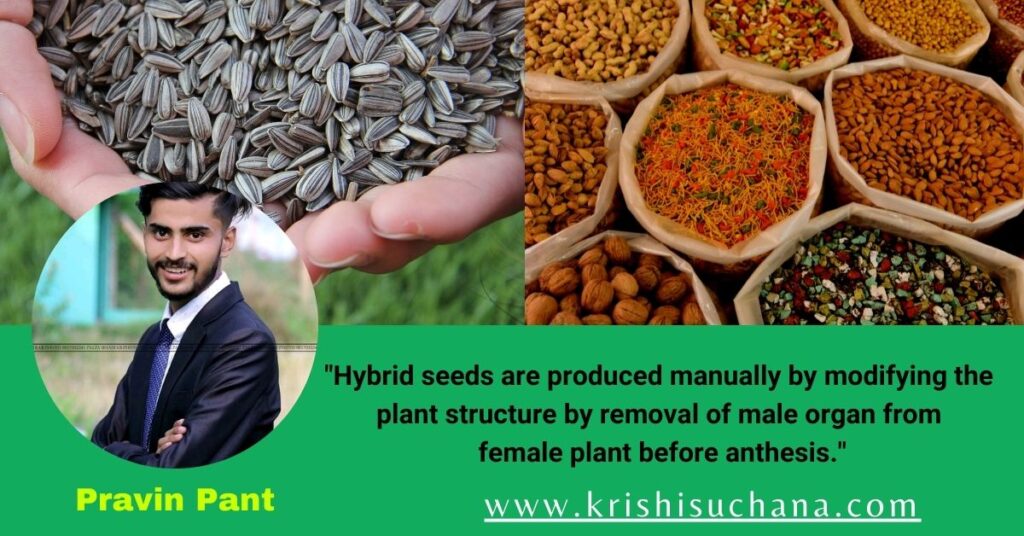Nepal’s Growing Reliance on Imported Hybrid Seeds Risk

Just three decades ago, a majority of Nepali farmers relied on local indigenous seeds. Even until the 90s, Nepal was a seed exporting country. Today, according to agriculture scientists, more than 90 percent of vegetable seeds employed in the country are imported. Nearly 34 percent of maize seeds are imported, and around 25 percent of rice seeds are from other countries.
According to scientist and different agricultural organization it is believed farmers started using hybrid seeds from 80s. At that time farmers from Parsa and Bara were planting the hybrid seeds. And those hybrids seeds were of Maize and most probably believed to imported form open borders of India. Rice hybrids were introduced in Nepal In early 90s and 2000s .Now around 25% of total rice seeds in Nepal’s are imported hybrids.
What is Hybrid Seed:
A hybrid is created by crossing two different varieties of the same plant. The seeds that develop inside that fruit are hybrid seeds. Hybrid seeds are listed as F1 types, as opposed to open pollinated (OP) types. Open pollinated seeds result from a simple sharing of pollen between two like parent plants.
Hybrid Seed Production:
Hybrid seeds are produced manually by modifying the plant structure by removal of male organ from female plant before anthesis. By removing the anther column / or male part from female line, the sterility of female line is created and is dusted with the pollen of desired male parent. In agriculture and gardening, hybrid seed is seed produced by cross-pollinated plants. Hybrid seed production is predominant in modern agriculture and home gardening. Controlled hybrids provide very uniform characteristics because they are produced by crossing two inbred strains.
Causes for the rise of hybrid seed:
The population of Nepal in 1980, which was around the same time the first hybrid seeds were used, was 15.01 million. But by 2000, the country’s population had reached 23.9 million. To feed the growing population, the country had to increase agricultural output. But it was impossible to do so by relying solely on local varieties. The most practical way to increase agricultural production was by using hybrid seeds.
Along with the increasing population, rapid urbanization and skyrocketing land prices have led land for agriculture to shrink. The total land area used for cultivation in the fiscal year 2015/2016 was 2,579,097 hectares, against 2,548,763 hectares in the 2016/2017 fiscal, a decrease of 30,334 hectares. Agro-economists say that in the last 10 years alone, more than 100,000 hectares of arable land have been lost to urbanization.
With land shrinking, it makes more commercial sense for farmers to rely on hybrid seeds. Crops from hybrid seed mature sooner than local varieties. This means we can sell them sooner. The return on investment is not only higher but also quicker.
Along with the increasing population the hybrid seeds proves to be more disease resistance and has more adaptation capacity in increasing climatic condition. From the food security to disease resistance capacity and adaptation to increasing climatic changes hybrid seed become first priority to the farmers .
Devastating consequences of hybrid seed:
Some agro-scientists the Post spoke to said that depending solely on hybrid seed isn’t good for the soil.
Hybrid seeds require a lot more nutrients than open-pollinated ones. So farmers have to use a lot of fertilizers, which accelerates the depletion of soil quality. This is one of the long term serious negative impacts of using hybrid seeds.
Increased use of hybrid seeds will thus drive demand for pesticides and chemical fertilizers, and Nepal, which doesn’t manufacture such fertilizers, will end up relying more on imports.
A balance must be struck between hybrid and open-pollinated local varieties, say experts.
The government should also focus on promoting local varieties for crops wherever possible. Even farmers in the country tend to care more for crops grown using hybrid seeds. But they do not give the same care for crops grown with open-pollinated seeds. We have some improved local varieties that give as much yield as hybrid ones if properly cared for. For example, our Khumal-4 variety of rice, an open-pollinated pure line variety, will give the same yield as hybrid if given proper care.
The growing use of these hybrid seeds results into high use of pesticides and fertilizers and our local varieties are extinct due to high use of hybrid seeds. One of the problems with hybrid seed is that hybrid seed have to produce every year. If the collected seed of hybrid is sown the plant in the progeny will segregate and do not maintain hybrid character.
Writer: Pravin Pant

